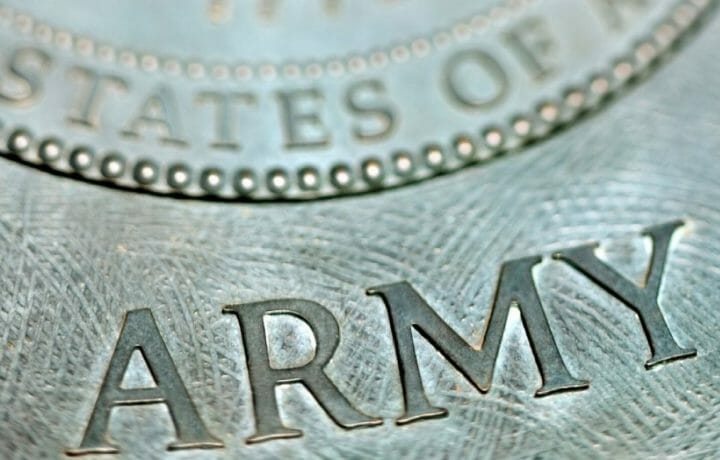There were a lot of changes in the $740 billion 2022 National Defense Authorization Act; however, two that will be game changers for Reserve Component (Army National Guard and Army Reserves) soldiers are the New Army Portal and change in ADOS-RC policy.
New Army Portal
Since 2017, part-time soldiers had to go to an Armory or base/post and use a government computer to locate open deployment positions and apply to voluntarily deploy. With the new portal – termed Tour of Duty – they will be able to in the future find this information and apply using their personal devices.
Not only will it make it easier and more convenient for citizen soldiers to apply for voluntary deployment tours, but it will also increase the pool of talent available for each open position.
Currently some soldiers have to drive a considerable distance round-trip to their nearest armory/ post/base to access this information. As a result, many did not feel it was worth it to make the round trip just to use a government computer, so they missed opportunities to volunteer for deployments.
Congress gave the Army one year to get the portal operational. The Army is complying with the change and is evaluating whether the portal will be part of their Bring Your Own Device pilot program planned to launch in 2022.
The Tour of Duty legislative provision was a bi-partisan effort spearheaded by Representatives Chris Jacobs (R-NY) and Tim Ryan (D-OH), and Senators Jacky Rosen (D-NV) and Joni Ernst (R-IA).
ADOS Policy Change
In the past, Guard and Reserve soldiers were only able to spend three out of every four years on ADOS-RC status (Active Duty for Operational Support Orders-Reserve Component). Under the policy change, they will now be able to serve 5 out of every 6 years in an ADOS-RC status. You’ll see why that is important in a minute.
Potential GI Bill Eligibility Change
One sticking point for Reserve Component soldiers, since Post 9/11 GI Bill went into effect on August 1, 2009, was some service time on orders was credited toward Post 9/11 GI Bill eligibility, but most was not. It all depends on the type of order. Discussing the different types of orders, as far as which ones count toward Post 9/11 GI Bill eligibility and which ones do not, can get complicated. So to keep it simple, generally speaking, duty served under Title 10 orders (active duty) counts toward GI Bill eligibility, while duty under Title 32 (non-active duty) does not … for the most part.
While an exception was made to count Title 32 time on orders in support of the pandemic, the time spent in uniform by 120,000 Guardsmen in response to January 6, 2021 did not, for example. And that is just one example out of many.
During a time when Reserve Component soldiers have been ordered to serve more Title 32 time in uniform and in larger numbers than at any time in history, there has been an effort to rectify this injustice by trying to legislate changes in the law.
Rep Mike Levin (D-CA) sponsored a bill that would credit each day served in uniform toward Post 9/11 GI Bill eligibility. While speaking on the House floor, he said: “Not only are these National Guard and Reserve members risking their lives to serve our country, but they’re also forced to put their civilian lives on hold when they’re called up, leaving behind their families and interrupting civilian careers,” He went on to say, “In some of those settings, they are serving side by side with active-duty members doing similar jobs and facing similar risks, but they’re not earning the same GI Bill benefits as their peers. That’s unacceptable.”
And while his sponsored bill did pass the House, it met resistance and failed in the Senate – because of cost. It was estimated the cost would be $1.9 billion over the next 10 years to support this bill. Failing to pass this bill indicated the members of Senate not supporting the bill were more interested in the cost than they were making sure Reserve Component soldiers are credited Post 9/11 GI Bill eligibility for duty served.
And why is GI Bill eligibility important for citizen soldiers? The Post 9/11 GI Bill eligibility is a tiered system meaning the more creditable time accumulated by a soldier, the higher percentage of tuition, fees, books and housing allowance is covered by the GI Bill. Because it is tiered, it takes 36 months of eligibility to reach the 100% level.
While active-duty soldiers earn one day of Post 9/11 GI Bill eligibility for each day served, RC soldiers only earn for the number of days served on orders that count toward that eligibility. Most RC soldiers never make the 100% tier under current policy. Each day served in uniform should count toward Post 9/11 GI Bill eligibility regardless of duty status.
So this brings us back to the New Army Portal and ADOS-RC and why it will be important to be able to volunteer for deployments and to serve more time on ADOS-RC and Title 10 tours that count toward Post 9/11 GI Bill eligibility.




